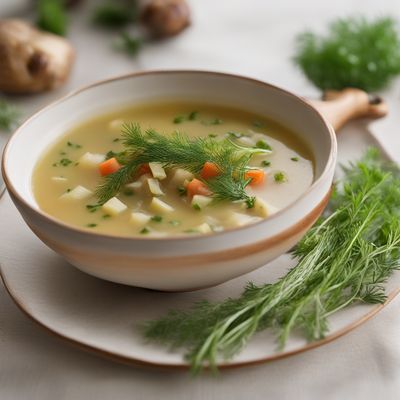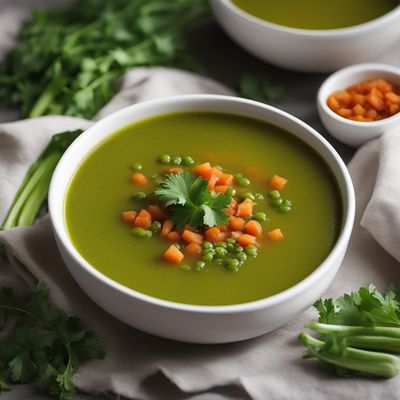
Ingredient
Cherries (sweet)
The Juicy Gems of Summer
Cherries are small, round fruits with a glossy skin that can range in color from bright red to deep burgundy. They have a firm yet juicy texture and a sweet-tart taste that is both refreshing and indulgent. Cherries are often used in desserts, jams, pies, and beverages, but they can also add a burst of flavor to savory dishes like salads or sauces.
Origins and history
Cherries have a long history dating back thousands of years, with origins believed to be in the region between the Black and Caspian Seas. They were highly valued by ancient civilizations, including the Greeks and Romans, who cultivated and traded them extensively. Cherries eventually made their way to Europe and North America, where they became popular fruits for cultivation and consumption. Today, cherries are grown in many countries around the world, with notable production in the United States, Turkey, and Russia.
Nutritional information
Cherries are low in calories and a good source of vitamins A and C. They also contain antioxidants and anti-inflammatory compounds that may have various health benefits. Additionally, cherries provide dietary fiber and are a natural source of melatonin, which may aid in sleep regulation.
How to select
When selecting cherries, look for plump, firm fruits with a shiny skin. Avoid cherries that are soft, bruised, or have blemishes. The stems should be green and firmly attached. The color of the cherries can vary depending on the variety, but they should have a vibrant hue. If possible, taste one cherry to ensure it meets your desired level of sweetness and tartness.
Storage recommendations
To store cherries, remove any damaged or spoiled fruits and place them in a breathable container, such as a paper bag or a shallow bowl lined with paper towels. Store them in the refrigerator, where they can stay fresh for up to a week. It is best to wash cherries just before consuming to prevent premature spoilage.
How to produce
Cherries can be grown in home gardens or small orchards. They require well-drained soil and full sun exposure. Depending on the variety, cherries can be grown from seeds or propagated through grafting. It is important to provide proper care, including regular watering, pruning, and protection from pests and diseases, to ensure healthy cherry trees and a bountiful harvest.
Preparation tips
Cherries can be enjoyed fresh as a snack or used in a variety of culinary creations. They are commonly used in desserts like pies, tarts, and cobblers. Cherries can also be used to make jams, jellies, and preserves. They pair well with chocolate, almonds, and other stone fruits. Additionally, cherries can be incorporated into savory dishes like salads, sauces, and glazes for meats.
Substitutions
Cherries can be substituted with other stone fruits like peaches or plums, depending on the recipe. However, the unique flavor and texture of cherries may be difficult to replicate. In some recipes, cranberries or raspberries can be used as alternatives for tart cherries.
Culinary uses
Cherries are a versatile ingredient that can be used in a wide range of culinary applications. They are commonly used in desserts such as cherry pies, cherry clafoutis, and cherry cheesecakes. Cherries can also be used to make cherry compotes, sauces, and syrups. In savory dishes, cherries can be incorporated into salads, salsas, and glazes for meats like duck or pork. Additionally, cherries can be used to infuse flavor into beverages like cocktails, smoothies, and fruit punches.
Availability
Cherries are commonly available in countries such as the United States, Turkey, Russia, and many European countries. They are also cultivated in regions with suitable climates, including parts of Asia, South America, and Australia.
More ingredients from this category
Recipes using Cherries (sweet) » Browse all

New Orleans-style Red Beans and Rice
Creole Comfort: New Orleans Red Beans and Rice

Classic Tuscan Ribollita
Hearty Tuscan Vegetable Stew: A Taste of Tuscany

Hubei-style Chicken Soup
Hearty Hubei Chicken Broth: A Taste of Comfort and Tradition

Lithuanian-style Potato Soup
Hearty Lithuanian Potato Soup: A Taste of Comfort and Tradition

Jellied Moose Nose with a Haute Cuisine Twist
Elevating Canadian Delicacy: Jellied Moose Nose with a Haute Cuisine Twist

Fabada Asturiana with a Twist
Hearty Spanish Bean Stew with a Modern Twist

Bordatino Soup
Hearty Tuscan Bean and Vegetable Soup

Bahamian Coconut Crab Soup
Caribbean Delight: Creamy Coconut Crab Soup

Bro' Brusà with a Twist
Savory Italian-American Broth with a Modern Twist

Tuscan Ribollita Soup
Hearty Tuscan Ribollita: A Rustic Delight

Insalata di Rinforzo with a Twist
Mediterranean Delight: Reinvented Insalata di Rinforzo

Slovak Split Pea Soup
Hearty Pea Delight: A Taste of Slovakia

